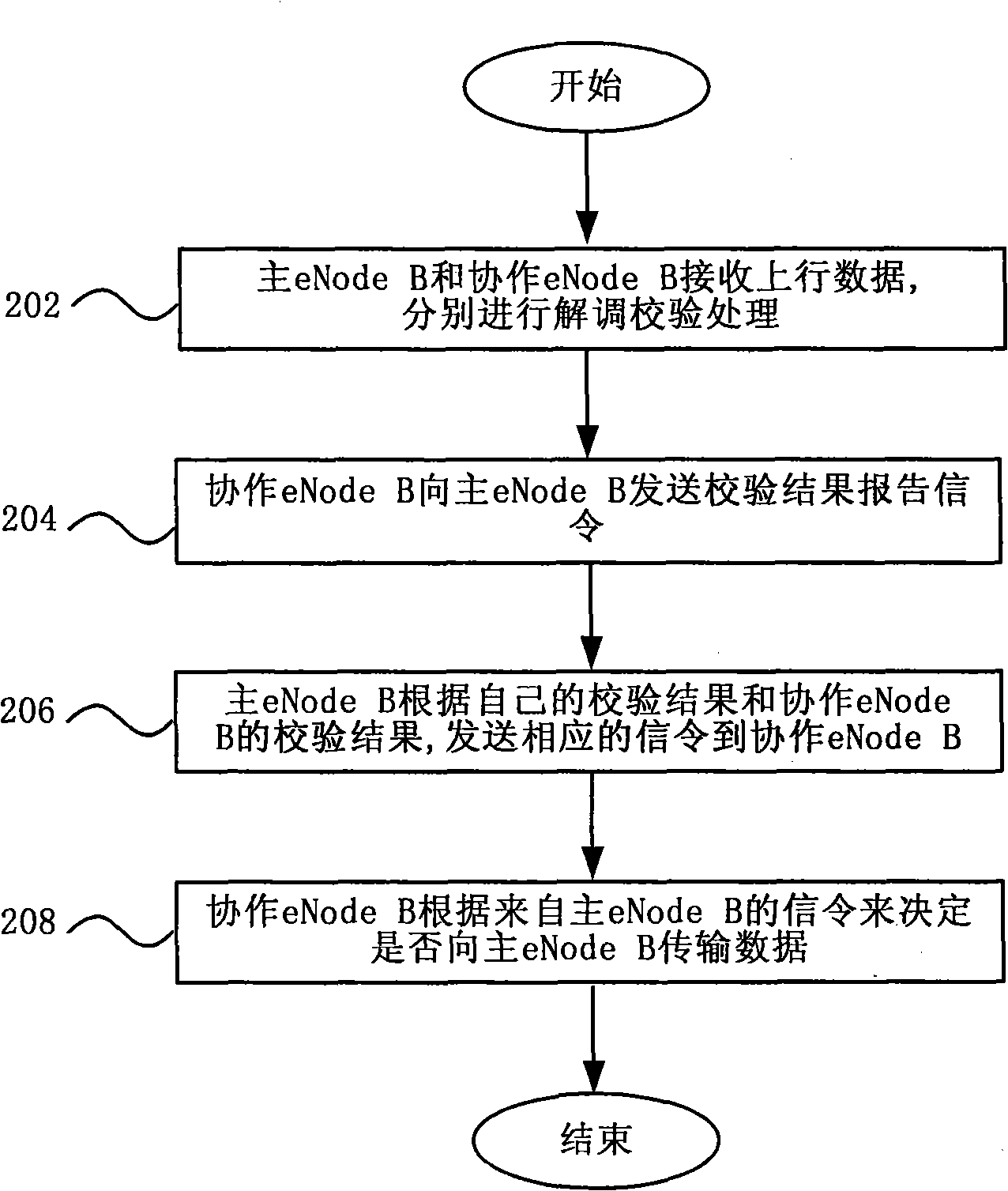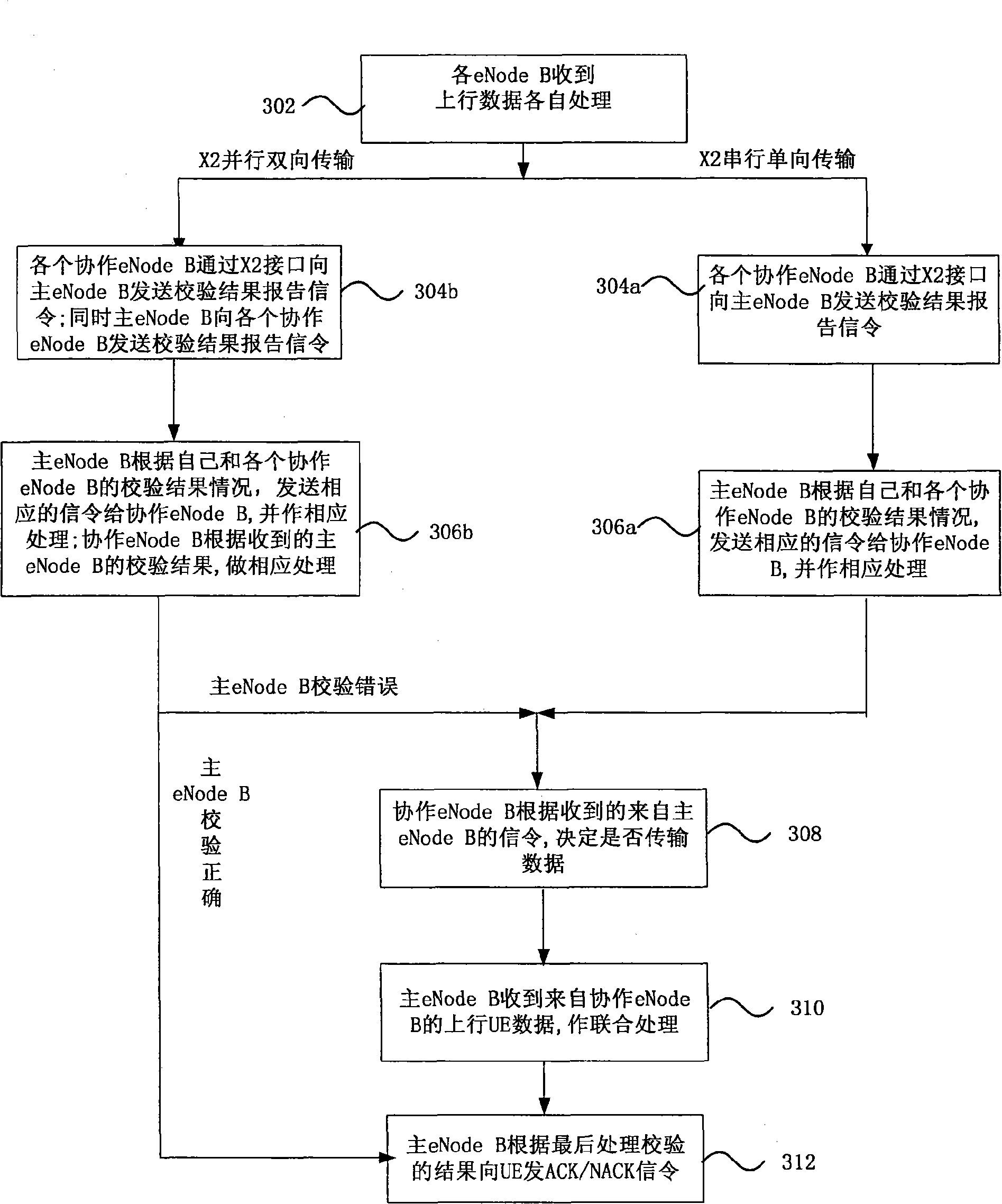Data merging and receiving method based on uplink coordinated multipoint
A receiving method and data technology, applied in the direction of digital transmission system, network traffic/resource management, electrical components, etc., can solve the problem of X2 link transmission overhead burden, etc., to achieve the effect of ensuring performance and reducing transmission overhead
Active Publication Date: 2010-02-03
BEIJING UNIV OF POSTS & TELECOMM
View PDF0 Cites 31 Cited by
- Summary
- Abstract
- Description
- Claims
- Application Information
AI Technical Summary
Problems solved by technology
But at this time, the X2 link tra
Method used
the structure of the environmentally friendly knitted fabric provided by the present invention; figure 2 Flow chart of the yarn wrapping machine for environmentally friendly knitted fabrics and storage devices; image 3 Is the parameter map of the yarn covering machine
View moreImage
Smart Image Click on the blue labels to locate them in the text.
Smart ImageViewing Examples
Examples
Experimental program
Comparison scheme
Effect test
 Login to View More
Login to View More PUM
 Login to View More
Login to View More Abstract
The invention discloses a coordinated multipoint data merging and receiving method used for an uplink CoMP scene, relating to an advanced long time evolution system (LTE-Advanced system) and a new technical point CoMP technology introduced into the LTE-Advanced system and mainly solving a problem concerning the multipoint uplink data reception in the CoMP scene which is different from a conventional cellular network. The method makes full use of the characteristics of CoMP uplink transmission and the separate data processing function of various dNode Bs, namely various coordinated cells conduct multipoint data reception and respectively demodulate the data. According to the verification of coordinated dNode Bs, master dNode Bs send corresponding signaling to the coordinated dNode Bs. The coordinated dNode Bs determine whether to transmit data to the master dNode Bs according to the signaling from the master dNode Bs. The master dNode Bs adopt an appropriate data transmitting and merging mode so as to reduce the transmission expenditure of an X2 interface and improve the uplink data transmission performance.
Description
[0001] Application for cross-reference [0002] This application claims the priority of the patent application with the application number 200910135793.7 and the title of the invention "Data Merging and Receiving Method Based on Uplink Coordinated Multi-point" submitted to the Chinese Patent Office on April 29, 2009, and the entire contents thereof are incorporated herein Reference. technical field [0003] The present invention relates to a coordinated multiple point transmission / reception (Coordinated Multiple Point Transmission / Reception, CoMP) technology, in particular to an uplink coordinated multiple point-based data combining and receiving method. Background technique [0004] LTE (Long Term Evolution, long-term evolution)-Advanced is the evolution of LTE technology, which is aimed at higher data transmission rate and spectrum utilization efficiency. In order to further improve cell edge user rate and overall system performance, CoMP is incorporated into the technica...
Claims
the structure of the environmentally friendly knitted fabric provided by the present invention; figure 2 Flow chart of the yarn wrapping machine for environmentally friendly knitted fabrics and storage devices; image 3 Is the parameter map of the yarn covering machine
Login to View More Application Information
Patent Timeline
 Login to View More
Login to View More IPC IPC(8): H04W28/04H04L1/00
Inventor 崔琪楣徐月巧杨姗李世渊许晓东陶小峰张平
Owner BEIJING UNIV OF POSTS & TELECOMM
Features
- R&D
- Intellectual Property
- Life Sciences
- Materials
- Tech Scout
Why Patsnap Eureka
- Unparalleled Data Quality
- Higher Quality Content
- 60% Fewer Hallucinations
Social media
Patsnap Eureka Blog
Learn More Browse by: Latest US Patents, China's latest patents, Technical Efficacy Thesaurus, Application Domain, Technology Topic, Popular Technical Reports.
© 2025 PatSnap. All rights reserved.Legal|Privacy policy|Modern Slavery Act Transparency Statement|Sitemap|About US| Contact US: help@patsnap.com



